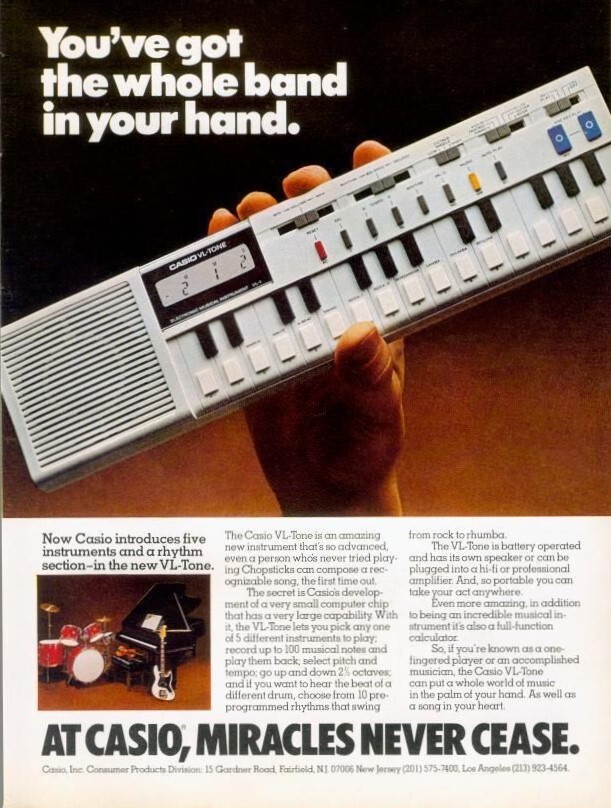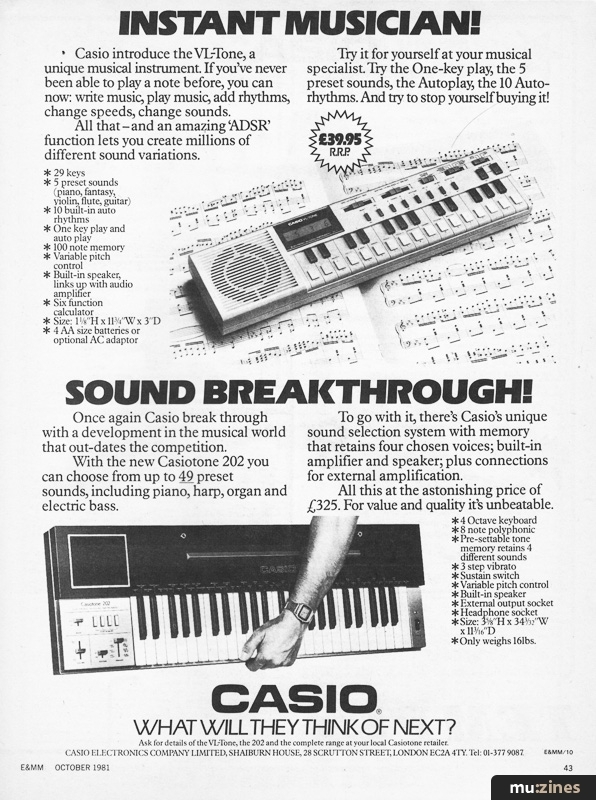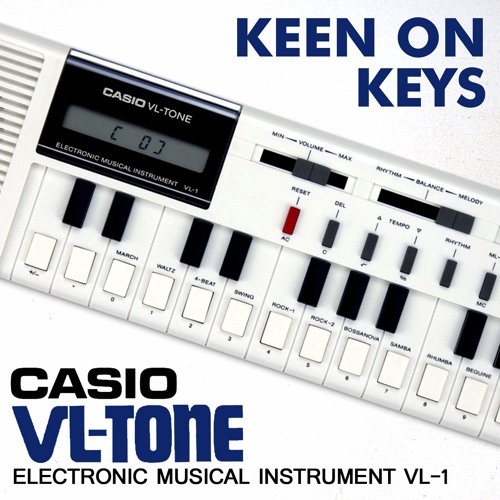Casio VL-1 classic 80's synthesizer
The VL-1, also called VL-Tone, is a 43 year old monophonic synthesizer and sequencer, released in June 1979. It was the first instrument of Casio's VL-Tone product line and was the first commercial digital synthesizer.
In a nutchell; a charming 80’s synth instrument classic with a lot a musical adepts (see 'Famous Users')
Technical specifications
"You've got the whole band in your hand!"
Due to its cheap construction and its unrealistic, uniquely low-fidelity sounds the Casio was notable for its kitsch value among electronic musicians. Nevertheless its ultra cheesy sound have been discovered and imortalized in a large number of artists.
The VL-1 is perennially overlooked by historians of electronic music technology - most of whom probably had it high on their Christmas lists back in 1980 - but it was significant at the time and still packs a characterful punch for those enamoured of the lo-fi sound.
The VL-1 was followed by the VL-10, a very similar machine in a smaller unit, and the VL-5, a polyphonic version, capable of playing four notes simultaneously, but lacking the VL-1's synthesizer section due to the removal of the calculator mode.
The VL-1 has 29 calculator-button keys (G to B), a three-position octave switch, one programmable and five preset sounds, ten built-in rhythm patterns, an eight-character LCD, a 100-note sequencer, and a multi-function calculator mode.
There is no chance at any external or MIDI control and there are no filters or effects included in the unit.
Its sounds were mostly composed of filtered squarewaves with varied pulse-widths. Its piano, violin, flute and guitar timbres were nearly unrecognizable abstractions of real instruments. It also featured a "fantasy" voice, and a programmable synthesizer which provided for choice of both oscillator waveform and ADSR envelope. It has a range of two and a half octaves.
The VL-1 also has changeable tone and balance, basic tempo settings and a real-time monophonic music sequencer, which can play back up to 99 notes. There are also 10 pre-loaded rhythms which utilize just three basic drum sounds. Casio internally named these sounds "Po" (30ms), "Pi" (20ms) and "Sha" (160ms).
The unit can be programmed by entering a number into the calculator section's memory, then switching back to keyboard mode.
Casio
VL-1 (VL-TONE)
1979
Vince Clarke, The Human League (album Dare!), Trans-X (Living On Video), Lady Gaga (Government Hooker), Vengaboys, Trio (Da Da Da), Sting, Stevie Wonder, The Cars, Robbie Williams, Apollo 440, The Talking Heads, The Fall, Mecano, White Town, Thomas Dolby, The Assembly, Bloodhound Gang, Fergie, Deee-Lite, Gorillaz, Mogul, Jimmy Fallon, The Roots, Buckwheat Zydeco, Devo, the Cars, Beastie Boys, Bill Nelson and many more.
The spanish 80s pop group MECANO used a Vl-tone in their second hit single "Perdido en mi habitación" of 1981.
The VL-1 acquired enduring notability in 1982, when the German band Trio used it in their song "Da Da Da" applying the Rock-1 rhythm preset and Piano voice.
The music video for Thomas Dolby's hit "She Blinded Me With Science" shows a group of schoolchildren holding VL-1s during a dream sequence.
The Human League use the VL-1 on their album Dare for "Get Carter".
A VL-1 is used by Bloodhound Gang in "A Lap Dance Is So Much Better When The Stripper Is Crying".
Made in Japan by Casio
The VL-1 combined the synthesizer / sequenzer with a digital calculator.
The Casio synth is exhibited at different museums around the globe, among which the Vienna Technical Museum.
Original manual and protecting softbag are included






